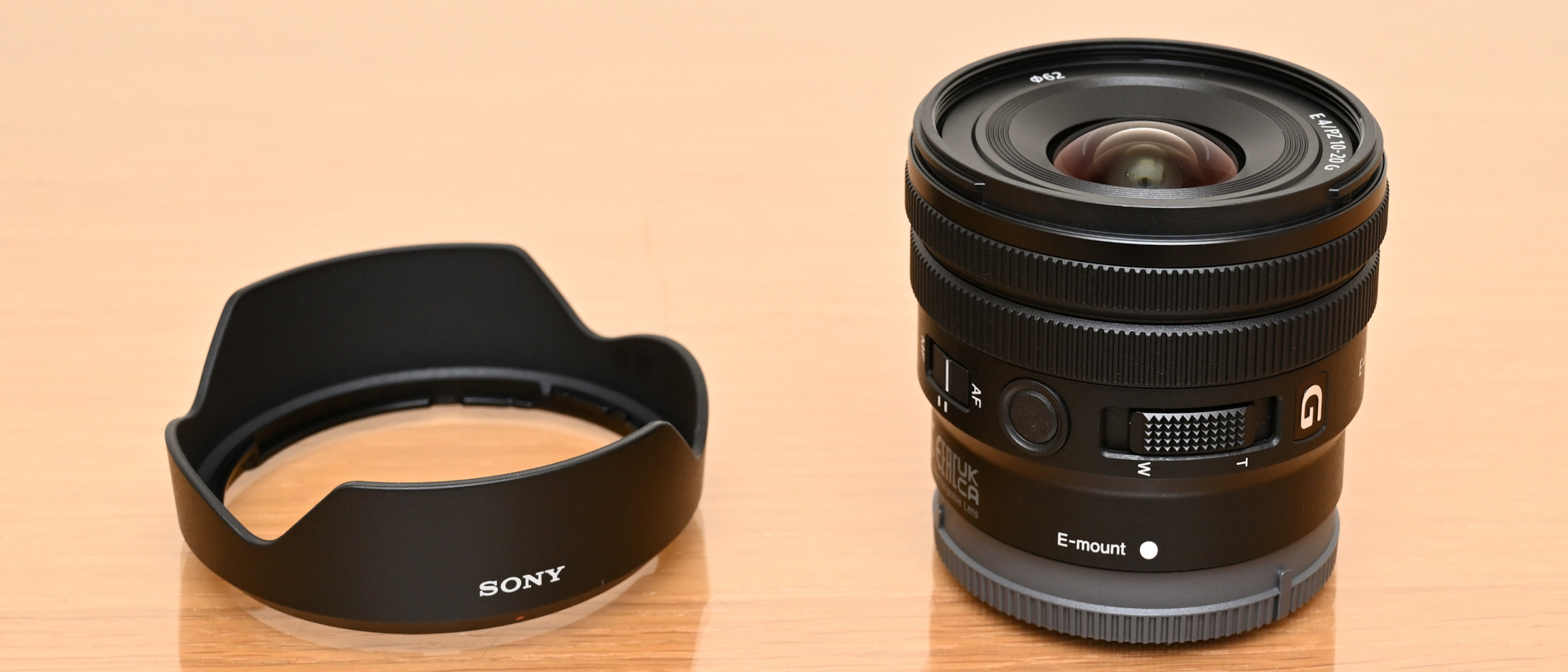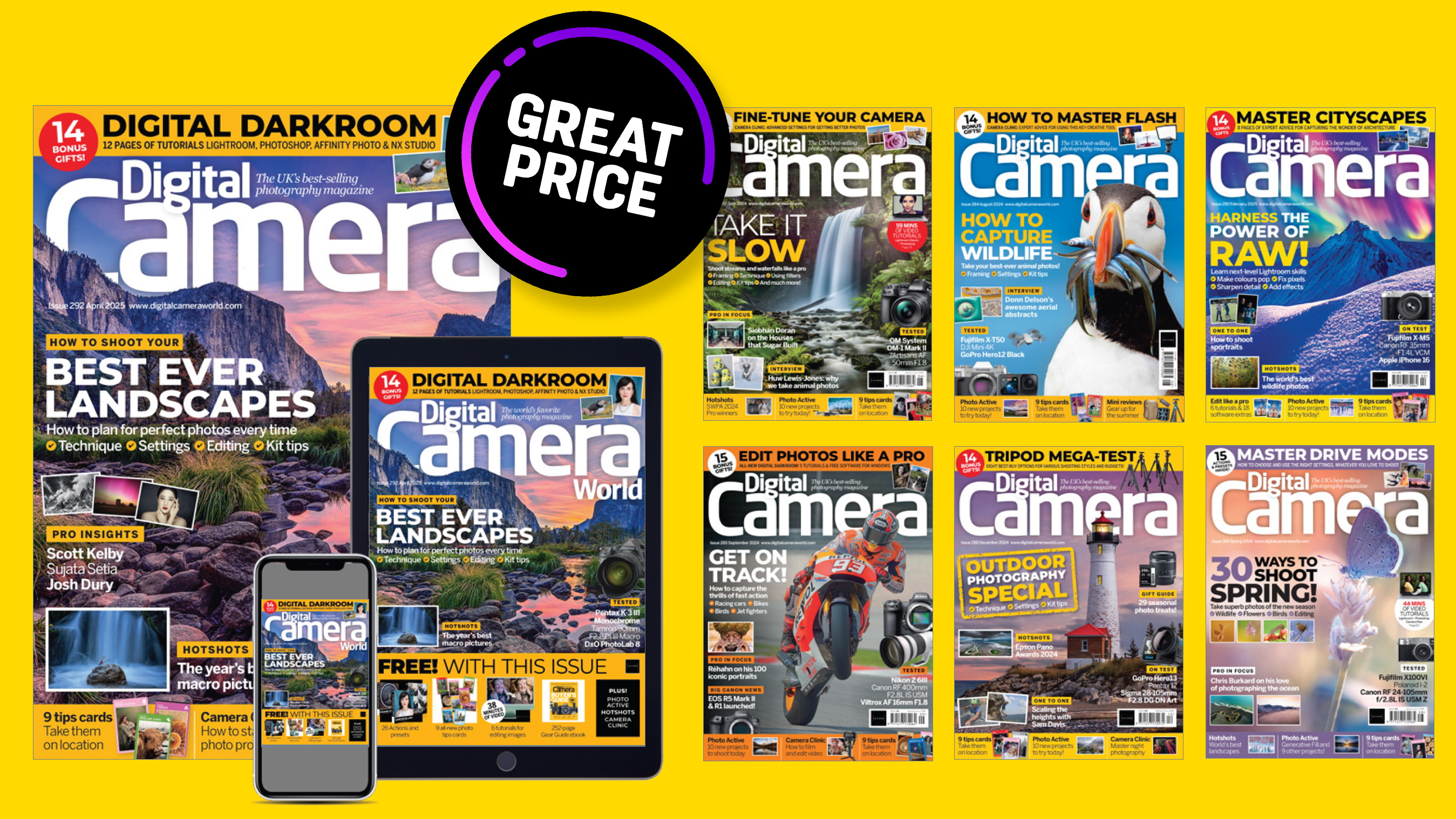Digital Camera World Verdict
The first thing that hits you about this ultra-wide-angle zoom lens for Sony’s APS-C format mirrorless cameras is just how small it is. The size and weight are more akin to an ultra-compact standard kit zoom with a variable (and slow) aperture rating. The fact that Sony has managed to shoehorn such an expansive zoom range with a constant f/4 aperture into such a small lens, complete with motorized zoom, really is quite something. Especially as image quality and overall performance are so excellent. It’s pricey for an APS-C format zoom but well worth the money.
Pros
- +
Great image quality and handling
- +
Smooth and silent AF and zoom
- +
Ultra-compact build
Cons
- -
Power zoom is less ideal for stills
- -
No aperture control ring
- -
No optical SteadyShot
Why you can trust Digital Camera World
The Sony E PZ 10-20mm F4 G claims to be the smallest, lightest f/4 ultra-wide APS-C format power zoom on the planet, and we certainly can’t find one that’s smaller. The star of its own Little and Large show, it’s amazingly compact yet delivers an ultra-wide range of viewing angles, equivalent to 15-30mm on a full-frame camera. The silent power zoom facility makes it ideal for vlogging and general video shooting, but it’s equally adept at capturing stills of anything and everything from architectural interiors to sweeping landscapes, or just for exaggerating perspective effects.
Specifications
Mount: Sony E
Sony product code: SELP1020G
Full-frame: No
Autofocus: Yes
Stabilization: No
Lens construction: 11 elements in 8 groups
Angle of view: 109-70 degrees
Diaphragm blades: 7
Minimum aperture: f/22
Minimum focusing distance: 0.2m (AF), 0.13-0.17m (MF)
Maximum magnification ratio: 0.14x (AF), 0.18x (MF)
Filter size: 62mm
Dimensions: 70x55mm
Weight: 178g
Key features
Top of the features list is arguably the power zoom facility. On a personal note, this reviewer isn’t generally a fan. I find they’re okay for video capture but lack precision in stills photography. That said, this Sony lens came as a pleasant surprise. The electronically coupled zoom ring is amazingly responsive, seamlessly converting the speed and amount of rotation to the resulting focal length. On top of that, or rather behind it, there’s a zoom lever that enables constant-speed adjustments right down to super-slow movements, ideal for avoiding jerky zoom transitions when shooting movies. There’s also an optional grip and remote controller, plus a free app for controlling everything from a mobile phone.
Let’s not forget the expansive zoom range itself, which is pretty epic with viewing angles of 70 degrees right up to 109 degrees. It’s great for vlogging as well as for getting the ‘bigger picture’ when it comes to shooting sweeping vistas in landscape photography, cityscapes and architectural interiors.
Autofocus is super-fast and extremely accurate, based on twin linear stepping motors but there’s no helping hand for sharpness in the way of optical image stabilization. That can be an issue when using Sony’s back catalogue of APS-C format mirrorless cameras, most of which lack in-body stabilization. Back on the plus side, inherent sharpness is boosted by the inclusion of three aspherical elements, two ED (Extra-low Dispersion) elements and one aspherical ED (Extra-low Dispersion) element, helping the lens to earn its ‘G-series’ stripes.
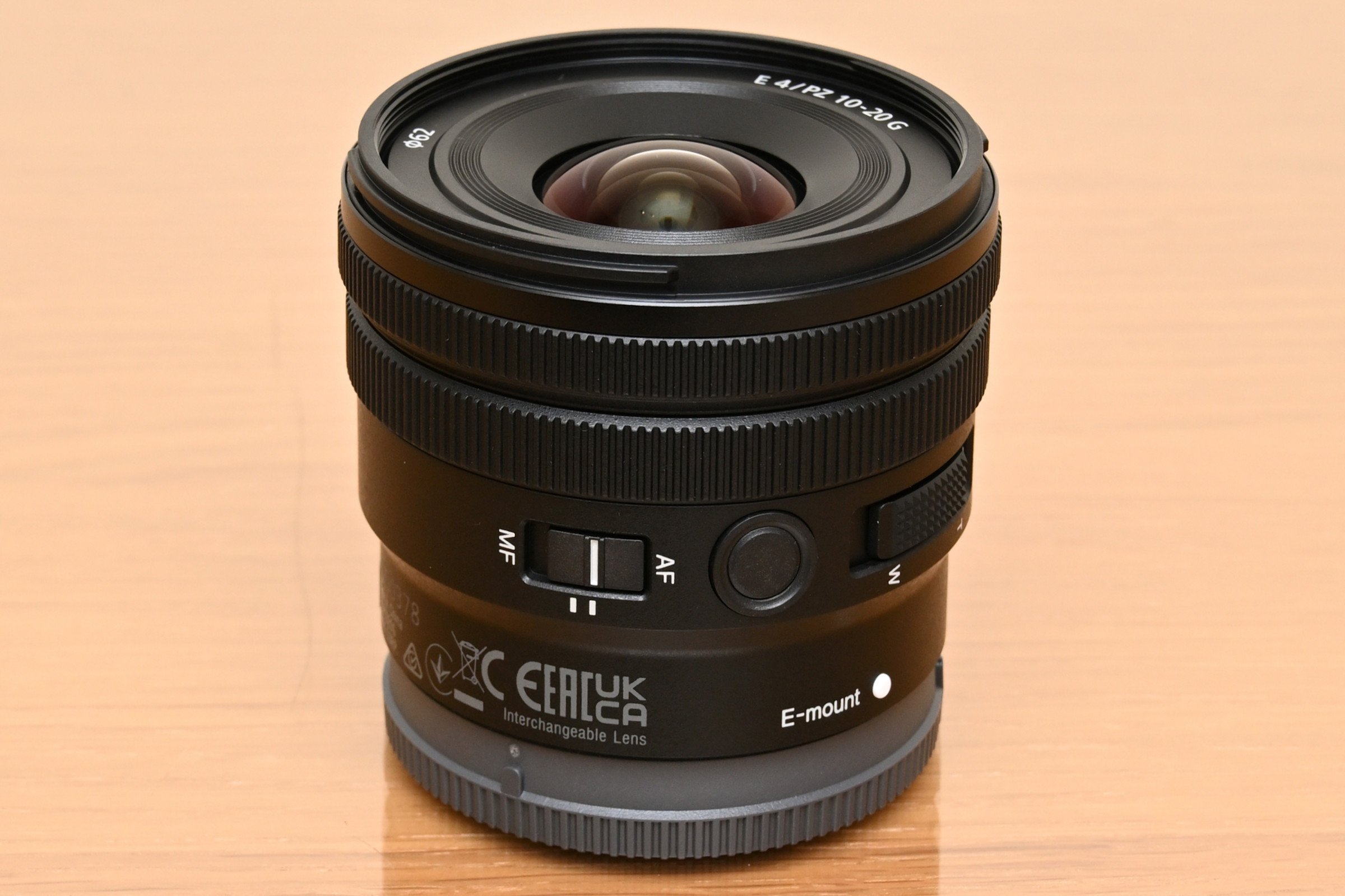
Build and handling
Build quality feels really tough, despite the small, lightweight construction of the lens. It also features multiple weather seals around all the joints, buttons and switches. Speaking of which, handling refinements include an AF/MF focus mode switch and a customizable focus hold button, which you can assign to other functions via in-camera menus.
Our only gripe in terms of handling is that there’s no aperture control ring, for which a de-clicked option would have nice when shooting movies. But there’s only so much you can squeeze into such a small lens. And continuing the small theme, both zoom and focus are fully internal, so the lens doesn’t physically extend at any zoom or focus setting.
Performance
Compared with prime lenses, zooms typically compromise image quality to some extent, especially when it comes to sharpness. Sure enough, this lens isn’t quite as scary-sharp as Sony’s recently launched E 11mm F1.8 and E 15mm F1.4 G primes but it comes very close. Outright levels of sharpness are highly impressive throughout the entire zoom range and across the whole image frame.
Meanwhile, color fringing is entirely negligible right out to the extreme corners of the frame, at every zoom and aperture combination. The only optical downside is that barrel distortion is simply massive in the shorter half of the zoom range. As with the Sony E11mm and E15mm, as well as dozens of other recent lenses for mirrorless cameras from most manufacturers, there’s a heavy reliance on automatic in-camera corrections.
Sample images




Lab results
We run a range of lab tests under controlled conditions, using the Imatest Master testing suite. Photos of test charts are taken across the range of apertures and zooms (where available), then analyzed for sharpness, distortion and chromatic aberrations.
We use Imatest SFR (spatial frequency response) charts and analysis software to plot lens resolution at the center of the image frame, corners and mid-point distances, across the range of aperture settings and, with zoom lenses, at four different focal lengths. The tests also measure distortion and color fringing (chromatic aberration).
Sharpness:
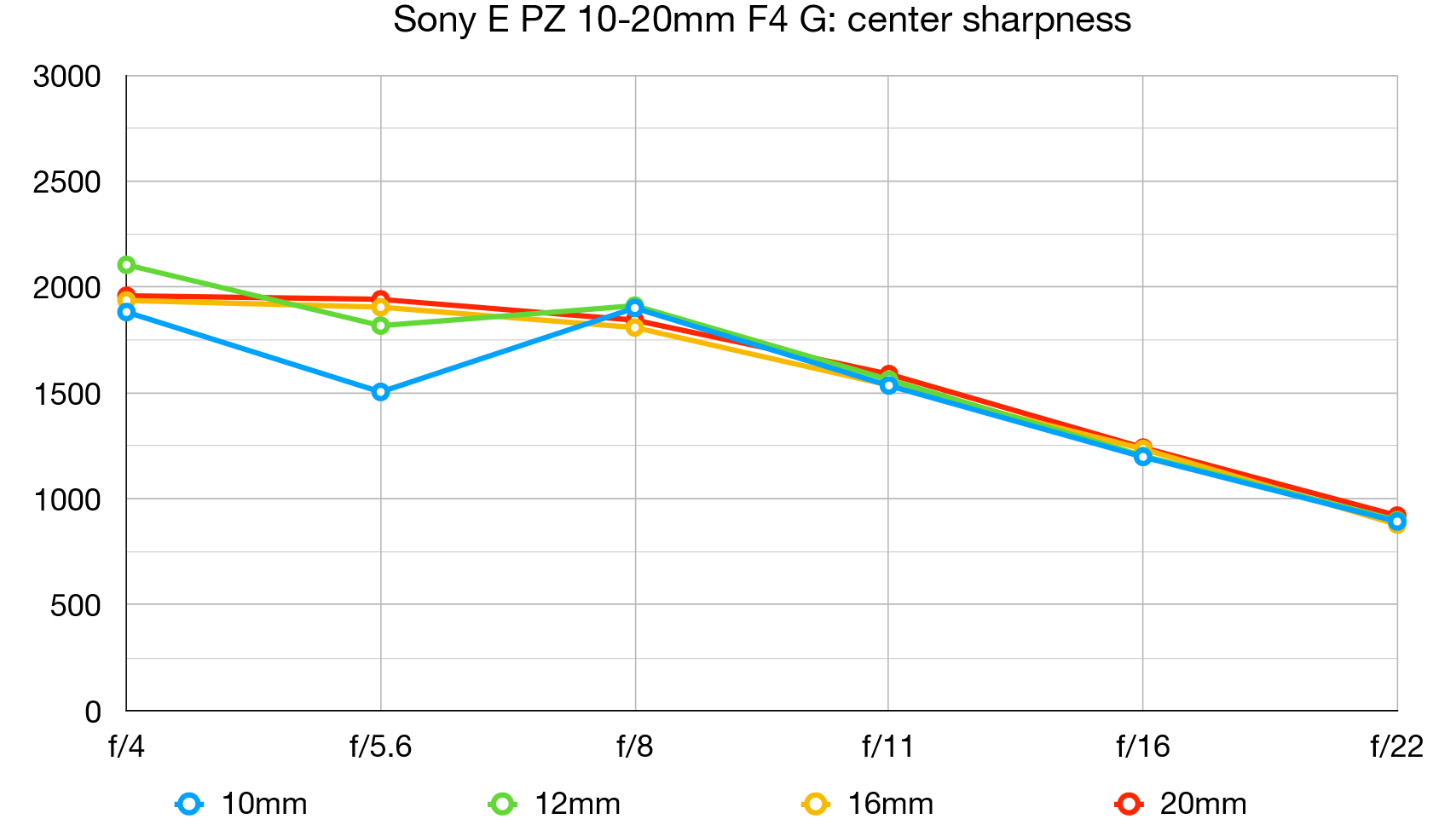
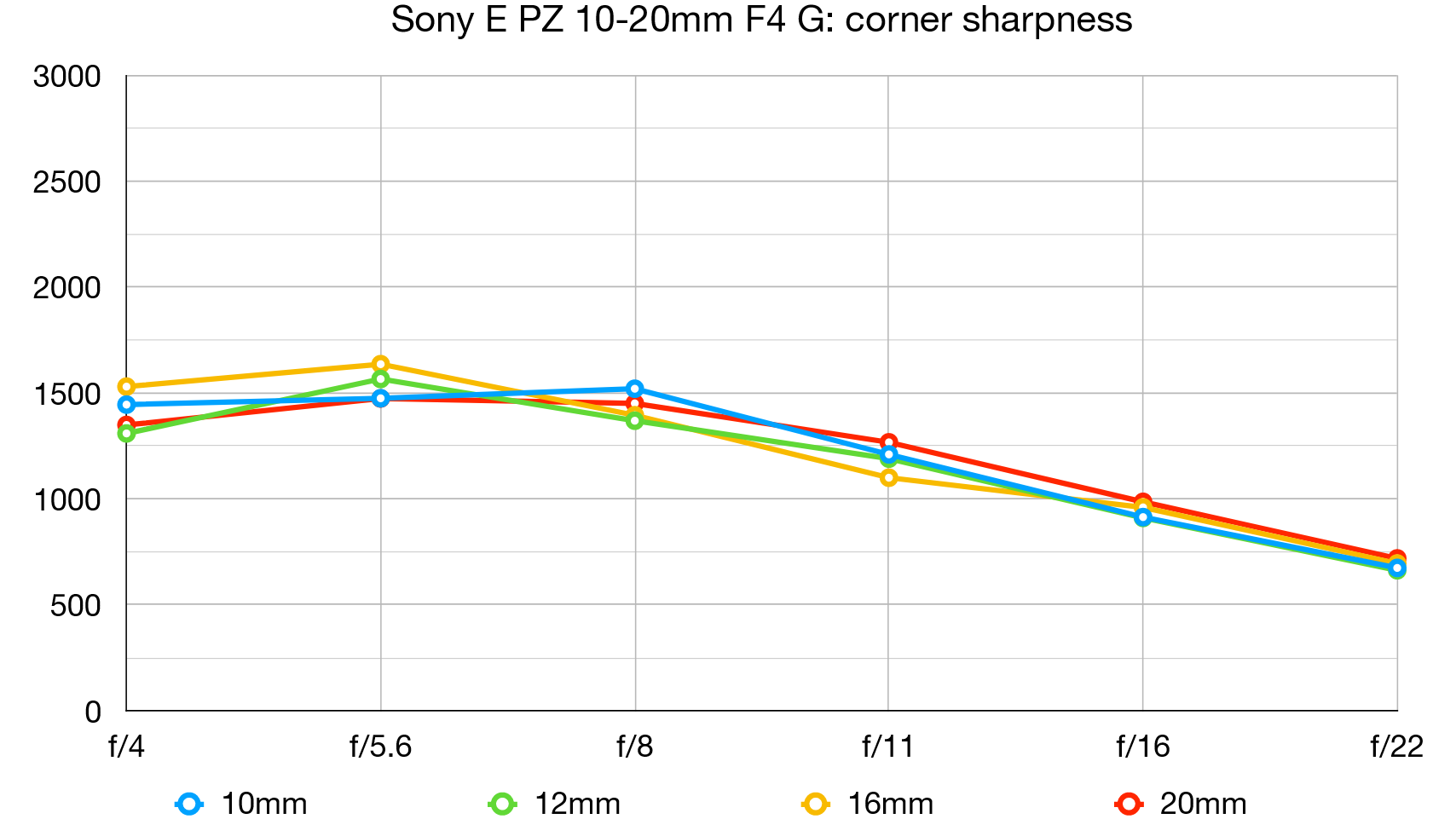
The short end of the zoom range is the ‘less sharp’ focal length of this lens but it’s still extremely good, even wide-open at f/4 and right out to the edges of the frame.
Fringing:
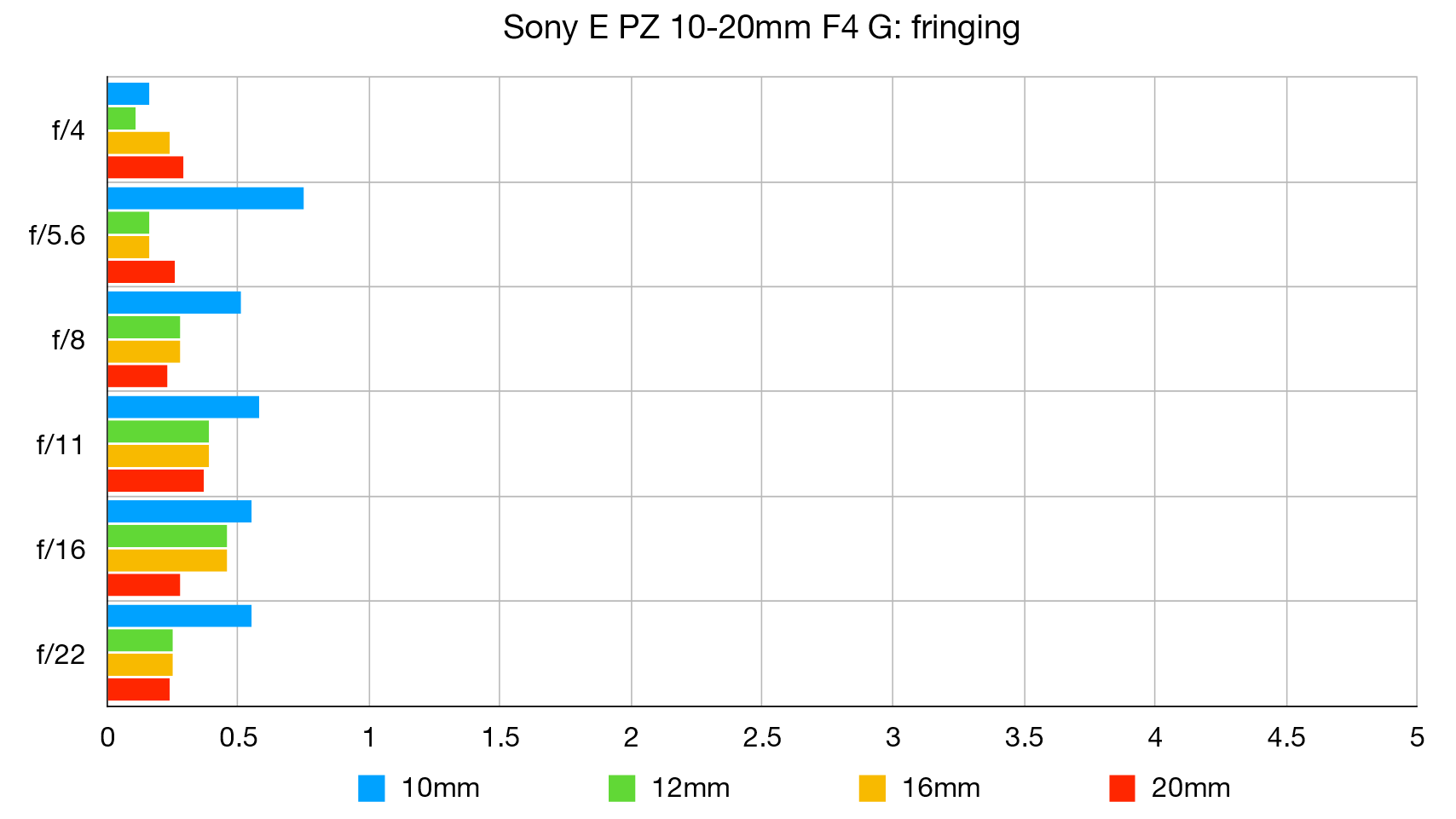
There’s virtually no color fringing to see at any focal length or aperture setting. The optical design does extremely well in this respect.
Distortion:
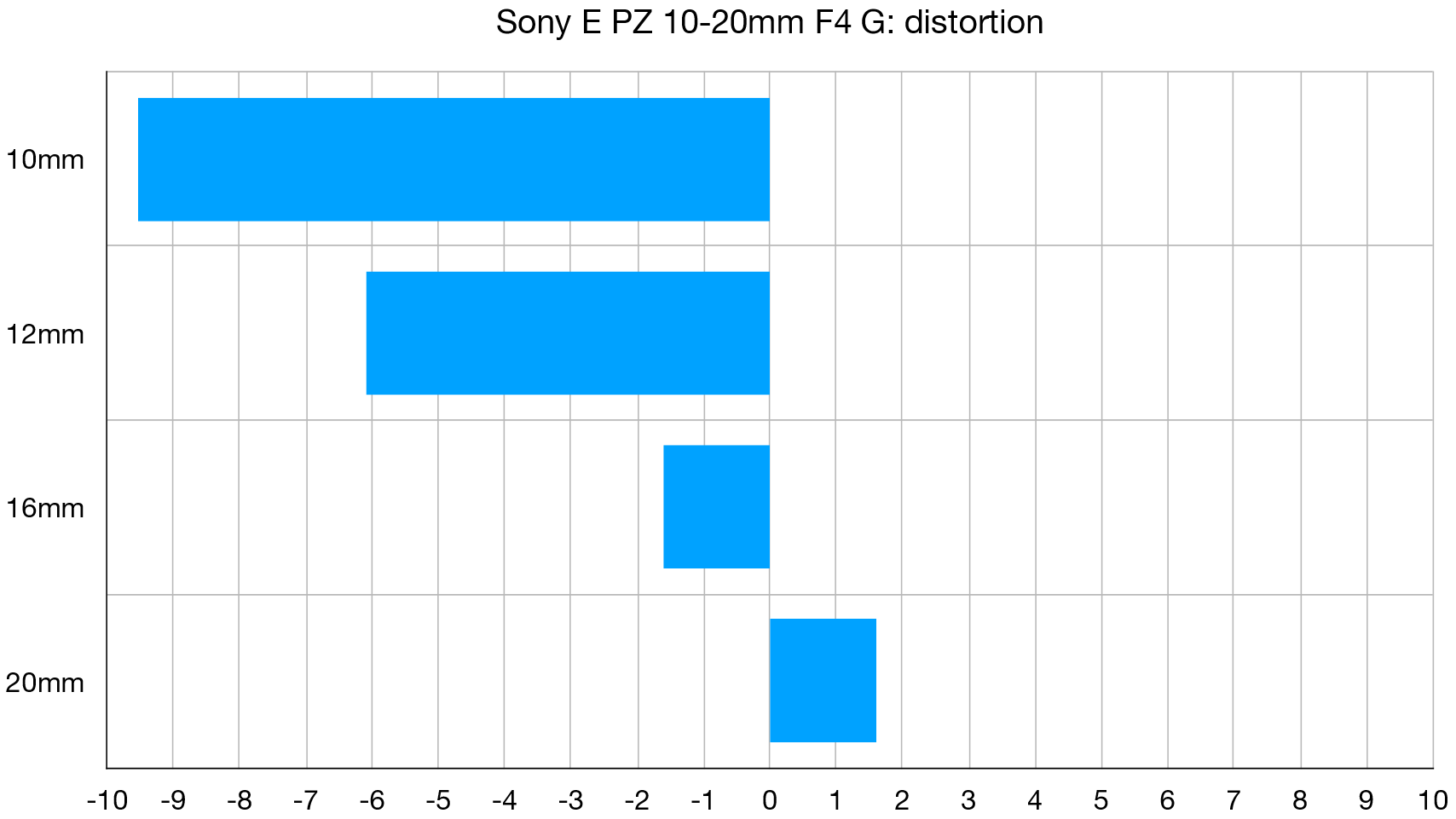
Barrel distortion is huge in the 10-12mm sector of the zoom range, but much better controlled in the 16-20mm area. Reliance on automatic in-camera corrections is often the price we pay for small lightweight lenses nowadays.
Verdict
The first thing that hits you about this ultra-wide-angle zoom lens for Sony’s APS-C format mirrorless cameras is just how small it is. The size and weight are more akin to an ultra-compact standard kit zoom with a variable (and slow) aperture rating. The fact that Sony has managed to shoehorn such an expansive zoom range with a constant f/4 aperture into such a small lens, complete with motorized zoom, really is quite something. Especially as image quality and overall performance are so excellent. It’s pricey for an APS-C format zoom but well worth the money.
Read more:
• Best camera lenses to get
• Best Canon lenses
• Best Nikon lenses
• Best Sony lenses
Matthew Richards is a photographer and journalist who has spent years using and reviewing all manner of photo gear. He is Digital Camera World's principal lens reviewer – and has tested more primes and zooms than most people have had hot dinners!
His expertise with equipment doesn’t end there, though. He is also an encyclopedia when it comes to all manner of cameras, camera holsters and bags, flashguns, tripods and heads, printers, papers and inks, and just about anything imaging-related.
In an earlier life he was a broadcast engineer at the BBC, as well as a former editor of PC Guide.
